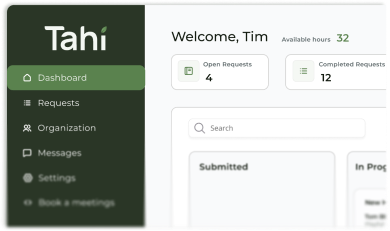Technical Debt
Technical debt is the implied cost of rework caused by choosing an easy or limited solution now instead of using a better approach that would take longer.
What does technical debt actually mean in a Webflow project?
Think of technical debt like financial debt. Taking a shortcut to get something done quickly is like taking out a small loan. It solves the immediate problem, but you have to pay it back later with interest. In a Webflow project, this 'interest' comes in the form of future rework, bugs, and slower development times. It happens when a quick or easy solution is chosen over a more robust and scalable one.
For example, a developer might use messy, disorganised class names or hard-code a specific value instead of connecting it to the Webflow CMS. The feature might work for now, but when you need to update that value across the site or build a similar component later, the initial shortcut makes the new task incredibly slow and difficult. It's the hidden cost of 'quick and dirty' fixes that can cripple a website's future potential.
Why does technical debt build up in the first place?
Technical debt often accumulates for very human reasons. Tight deadlines, limited budgets, or pressure to launch a feature can lead teams to cut corners. Sometimes, it stems from a lack of experience; a developer might not know the best practice and inadvertently creates a messy structure that will cause problems down the line. A vague project brief or poor scope management can also be a culprit, leading to solutions that don't fully consider future needs.
Interestingly, not all technical debt is bad. A team might strategically take on a small, manageable amount of 'planned' debt to hit a critical launch date, with a clear plan to go back and 'refactor' or clean up the code shortly after. The real danger lies in unplanned, unmanaged debt that piles up silently, turning a once-agile website into a rigid and fragile system that is difficult and expensive to maintain.
What are the real world consequences of high technical debt?
The consequences of high technical debt can be severe and far reaching. What starts as a minor inconvenience can quickly snowball. Future development slows to a crawl because every simple change requires navigating a complex and brittle structure, turning what should be a one hour task into a full day of work. The risk of introducing new bugs skyrockets, as changing one element can unexpectedly break another seemingly unrelated part of the site.
This makes onboarding new team members a nightmare, as they have to spend weeks deciphering messy code instead of building new features. Over time, this can also negatively impact performance and page speed, which hurts user experience and your site's SEO rankings. Ultimately, if left unchecked, the debt can become so high that the only viable option is a complete and costly website rebuild from scratch.
How can you prevent technical debt in your Webflow site?
Preventing technical debt is all about prioritising quality and long term thinking from the very beginning. The most effective way is to partner with a team that values clean, scalable, and maintainable development. This means using established methodologies like the Client-First style system, which ensures that class names are logical and the site structure is built for growth.
A solid project foundation is also crucial. Taking the time for proper discovery, clear wireframes, and component based design before any development begins ensures that the site is built thoughtfully. It's about building things the right way, even if it takes a little longer upfront. Investing in thorough Quality Assurance (QA) testing and code reviews also acts as a critical safety net, catching potential issues before they become permanent parts of your website's codebase.
How does Tahi Studio help businesses manage technical debt?
At Tahi Studio, we build digital assets for the long term. Our core value of uncompromising quality means we are fundamentally opposed to creating technical debt. We approach every project with the goal of creating a clean, scalable, and easily maintainable Webflow site that can grow and adapt with your business for years to come.
Our team is composed of senior level experts who understand the importance of a solid foundation. By using best practices and a strategic, partnership focused approach, we ensure your website remains a powerful asset, not a technical liability. Through our subscription model, we build foundations you can confidently grow on, free from the weight of future rework and unforeseen costs.






